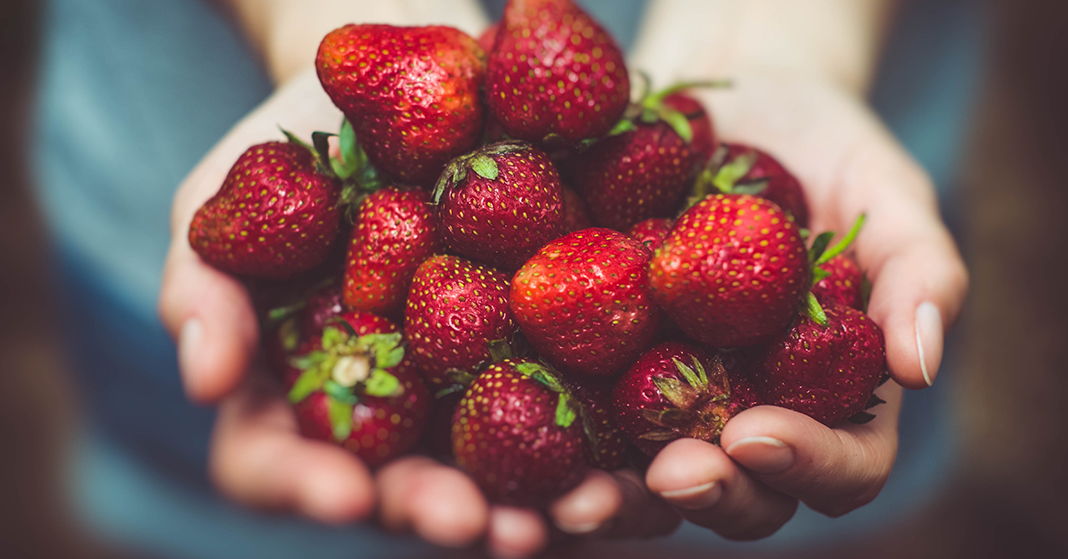
I love to cook, and I especially love to bake. But a while back, I found myself in a quandary. I had three guests in my house. One was on a grain-free diet. Another was vegan. And I had no idea what to make for dessert. I had some fresh fruit in the house—including a large container of fresh strawberries—but all my usual strawberry dessert recipes had been ruled out. How could I possibly make a dessert that had no eggs, no dairy products, and no grains of any kind? Did such a thing even exist?
Showing Love with Food
People all over the world use food to nurture relationships with each other. Many of my own relationships have been built and maintained over a shared meal, a shared plate of cookies, or even a shared table at the local coffee shop. Food is an important tool that we as Christian homeschool moms can use to show love to our neighbors.
But, as I realized that afternoon in my kitchen, sometimes cooking for other people can get complicated. I’ve been blessed with a husband and children who can eat just about anything I care to cook. But many families in my church and some members of my extended family deal with food allergies and other dietary restrictions on a daily basis. How could I love my neighbor when they come to my home? By caring enough to adjust my cooking to fit their needs.
That afternoon, I managed to substitute my way through a strawberry cobbler recipe in order to meet the needs of my guests. To be honest, it wasn’t awesome, and I probably wouldn’t duplicate it even if I could remember the recipe. But it wasn’t a disaster. And it said “I care” in a very tangible way that went a long way toward making my guests feel welcome. In that sense, it was a very big win.
Cooking for Others with Dietary Restrictions
Here are a few tips that I’ve learned about caring for people with dietary restrictions.
- Before you take someone a food item or have people over to your home for a meal, ask if there is anything that they can’t eat or don’t prefer to eat or if they are on a specialized diet (such as paleo). That way, you can avoid any potentially awkward moments.
- Read the ingredients lists on food labels. Some items have ingredients that you would never expect. (Bottled salad dressings and other sauces can be particularly tricky.)
- Pay attention to how recipes work. If you know what each ingredient contributes, you’ll find it easier to figure out substitutions.
- Encourage your kids to eat whatever you fix, especially if you have guests in your home. I fix vegan meals on a fairly regular basis now, and my four young daughters eat whatever is placed in front of them. It’s their way of loving our guests and making them feel welcome.
And here are a couple of my favorite variations on the classic strawberry pie that are tailored to meet some specific dietary needs.
- Vegan & Gluten-Free Strawberry Pie (from the Where You Get Your Protein website)
- Paleo Strawberry Pie (from the Yankee Homestead blog)
Can I add, since we deal with food allergies, it goes so much deeper than just reading labels. There are parts of the label that aren’t mandatory in the US. Things like shared equipment is voluntary by a manufacturer which can put a food allergic individual at risk of reaction. Ask about safe ingredients. Also don’t be shocked if the food allergic family declines you feeding their allergic member and brings safe food. Death isn’t something that can be fixed.